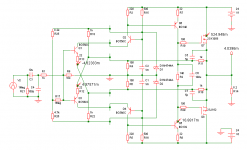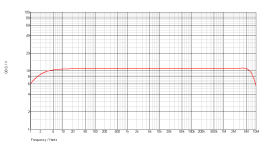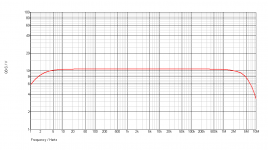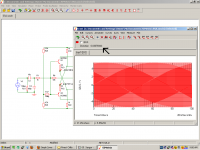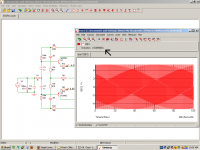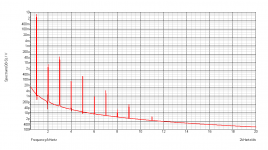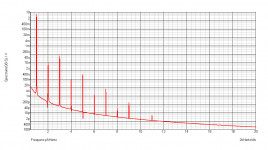Hi everyone.
My previous efforts to build a(or two) simple symmetrical amplifier has been succesful and have shown me a completely new and fresh definition of "transparency" in perceived audio quality and my speakers with these amps show completely different color compared to with my JLH-2003, Eliott-P3A and P101. I just love the output of JLH and P101, but the symmetrical amp has introduced another level/dimension of "musicality" to my music materials.
As a result of my symmetrical experiments I ended up with two different input stage configs which worked equally well; one is the very popular and respected version used in the Lazycat SSA with conjoined bases of the input BJT pair, and another with BJT bases isolated with input capacitors.
In the initial experiments there was some serious flaws in the latter config(mainly due to my limited knowledge and experience) and was helped by Mr. Andrej(the great Lazycat) and others in the original SSA thread and I was able to build it properly and play music through it, it had a clear/bright sound signature. I had built a pair of SSAs too which had a similar signature on the output. The SSA had cascode BJTs powering the input pair but the isolated base version didn't have it, the current through the input pair was more unequal than the SSA(both in the simulation and in reality). Also the simmed distortion spectra of the isolated base config showed about +10dB increase in harmonic content.
Some days ago I simulated both circuits and had similar results with the isolated base config. Just out of curiousity I put cascodes in the circuit and the base current of the two input bjts came much closer to each other, and resulted in much lower distortion in simulation, almost equal to the SSA. With 0.5A bias in the output FETs, 15mA in the VAS and 4.5mA in the input stage of both circuits, a 10VPP 1kHz sine into 8.2ohm gave 0.03% distortion with more odd harmonics than even ones and with a similar slope in the magnitude of each harmonic in both circuits.
Under the above circumastances I am now going to build both amplifiers again. This time I will keep the cascode+VAS+output in one board and build the two different input stages in two different boards, this will result in only 7 small wire links between the i/p and o/p module and experiments will be easier and faster.
The SSA however, has higher bandwidth than the isolated one, but to get the same low frequency response the input cap has to be increased by an order of magnitude; YES there will be a capacitor at the input of SSA. Simulation result of both configs are given below.
Left attachment - SSA, right attchment - isoSSA
My previous efforts to build a(or two) simple symmetrical amplifier has been succesful and have shown me a completely new and fresh definition of "transparency" in perceived audio quality and my speakers with these amps show completely different color compared to with my JLH-2003, Eliott-P3A and P101. I just love the output of JLH and P101, but the symmetrical amp has introduced another level/dimension of "musicality" to my music materials.
As a result of my symmetrical experiments I ended up with two different input stage configs which worked equally well; one is the very popular and respected version used in the Lazycat SSA with conjoined bases of the input BJT pair, and another with BJT bases isolated with input capacitors.
In the initial experiments there was some serious flaws in the latter config(mainly due to my limited knowledge and experience) and was helped by Mr. Andrej(the great Lazycat) and others in the original SSA thread and I was able to build it properly and play music through it, it had a clear/bright sound signature. I had built a pair of SSAs too which had a similar signature on the output. The SSA had cascode BJTs powering the input pair but the isolated base version didn't have it, the current through the input pair was more unequal than the SSA(both in the simulation and in reality). Also the simmed distortion spectra of the isolated base config showed about +10dB increase in harmonic content.
Some days ago I simulated both circuits and had similar results with the isolated base config. Just out of curiousity I put cascodes in the circuit and the base current of the two input bjts came much closer to each other, and resulted in much lower distortion in simulation, almost equal to the SSA. With 0.5A bias in the output FETs, 15mA in the VAS and 4.5mA in the input stage of both circuits, a 10VPP 1kHz sine into 8.2ohm gave 0.03% distortion with more odd harmonics than even ones and with a similar slope in the magnitude of each harmonic in both circuits.
Under the above circumastances I am now going to build both amplifiers again. This time I will keep the cascode+VAS+output in one board and build the two different input stages in two different boards, this will result in only 7 small wire links between the i/p and o/p module and experiments will be easier and faster.
The SSA however, has higher bandwidth than the isolated one, but to get the same low frequency response the input cap has to be increased by an order of magnitude; YES there will be a capacitor at the input of SSA. Simulation result of both configs are given below.
Left attachment - SSA, right attchment - isoSSA
Last edited:
Hi Shaan 😉
Very good job, congratulations.
As you were tested many amps looking to the most musical one I quietly knew that SSA would be the one to pick, because I know how transparent and musical this amp is. Listening many times in my lab the channel which was on the table just for experimenting, I experienced amazing thing that even listening to only one channel simply doesn't let you stop doing it. Also this happened in the last case few days ago, puting in action high performance version, I spent almost one hour listening only to this channel. So it obviously has something more, experienced also by you and the others, not really only my delusion. 😎
I hardly wait to hear about your results from these two versions. 🙂
Regards, Andrej
P.S. For proper low pass filtering connect 100pF after 1k input serial resistor. 😉
Very good job, congratulations.

As you were tested many amps looking to the most musical one I quietly knew that SSA would be the one to pick, because I know how transparent and musical this amp is. Listening many times in my lab the channel which was on the table just for experimenting, I experienced amazing thing that even listening to only one channel simply doesn't let you stop doing it. Also this happened in the last case few days ago, puting in action high performance version, I spent almost one hour listening only to this channel. So it obviously has something more, experienced also by you and the others, not really only my delusion. 😎
I hardly wait to hear about your results from these two versions. 🙂
Regards, Andrej
P.S. For proper low pass filtering connect 100pF after 1k input serial resistor. 😉
Last edited:
- Status
- Not open for further replies.
